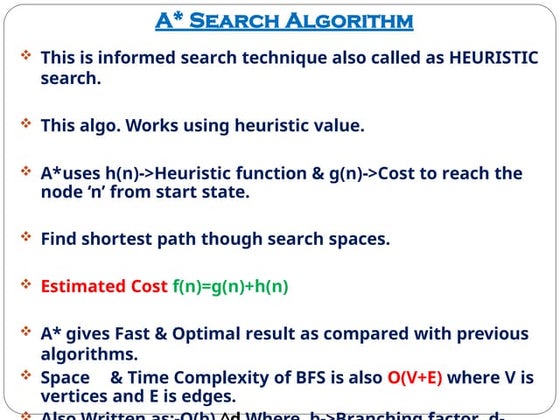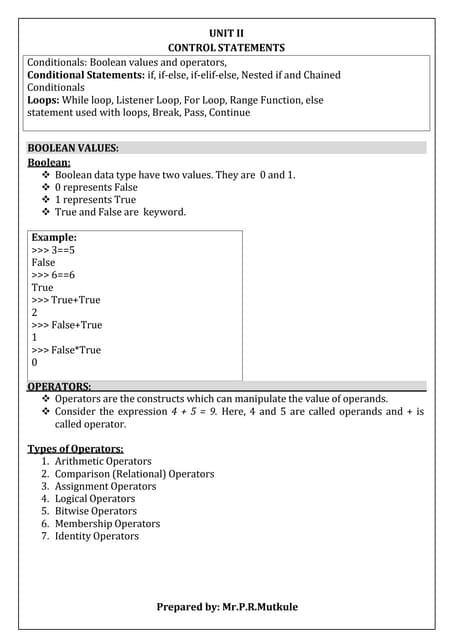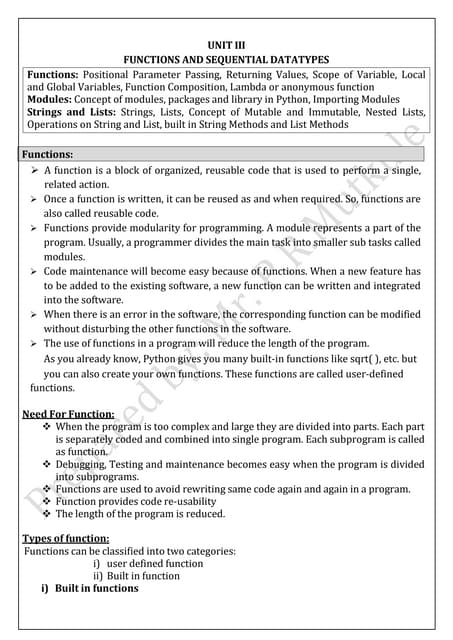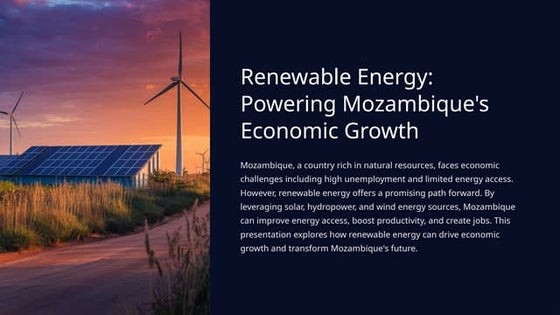Lec56
- 1. Control Systems Prof. C. S. Shankar Ram Department of Engineering Design Indian Institute of Technology, Madras Lecture â 56 Bode Plot 4 Part - 2 So now, having a plot at the magnitude plot; once again please note that I am only plotting the asymptotes right. We are not plotting the actual curve assets right. So, now let us go ahead and plot the phase plot. (Refer šÝšÝßĢ Time: 00:38) So, let us do the phase plot. So, let me draw the phase plot. So, the phase of G of j omega I am plotting in degrees. So, let us say I start with 0, and then let us say so this is ok, let us say this is minus 90, let us say this is plus 90, fine. So, once again we have 0.1, 1, 10 say 100 so as the four regions. Now, let us just plot the phase plot. So, what is going to happen let us do it for each one factor at a time right that is what we are going to do. So, let me use the same colour code. So, what happens to the see ultimately what are we plotting for G of s is going to be let me rewrite the transfer function here. So, 0.1 s divided by s plus 1 times 0.1 s plus 1 right, so that is what we are doing ok. So, now what is going to be the phase contribution
- 2. of 0.1, the phase contribution of 0.1 is going to be 0 degrees right. So, I draw a horizontal line at 0 degrees. So, this is going to be the contribution from 0.1. What is going to be the contribution from s plus 90 right? So that is going to be the same throughout the frequency range. So, this is the phase contribution of s. What about the phase contribution of 1 by s plus 1? So, if you recall what happens with 1 by s plus 1 is at the low frequency value is 0, it has a phase of minus 45 degrees at the corner frequency is 1 and then it tends to 90 degree minus 90 degrees as omega tends to infinity right that is the phase plot of 1 by s plus 1 right. So, that is what I am going to plot. So, at the corner frequency of 1, we are going to have a what to say phase of minus of 45. So, what is going to happen is the following. So, 1 by s plus 1 will have a phase plot like this ok. This is going to be the phase plot of 1 by x plus 1 in green. Now, what is going to happen with 1 by 0.1 s plus 1 at the corner frequency of 10, we are going to have a phase of minus 45. So, what is going to happen is the following. So, we are going to have a phase diagram of 1 by 0.1 s plus 1 coming like this ok. So, this is the phase diagram of 1 by 0.1 s plus 1. So, now what we need to do is that if I want a phase diagram of the complete transfer function, I just need to add the four curves right. But this is a little bit complex because these are not straight lines right. So, it is ok, but the thing is that like at low frequencies you will start from plus 90 degrees that is obvious right because at very low frequencies the only phase contribution will come from s, because 0.1 anyway will give you of case contribution of 0 degrees throughout, 1 by s plus 1 and 1 by 0.1 s plus 1 will give you a phase contribution of close to 0 degrees at low frequencies. So, at low frequencies, anyway I will start from the value of 90 degrees. So, if you in a sense look at the phase of G of j omega, the essentially the formula for this is going to be 90 degrees, because that is what s will give me minus tan inverse omega that is what the will be the phase of 1 by j omega plus 1 and tan inverse of minus tan inverse of 0.1 omega because that is going to be the phase contribution of 1 divided by 0.1 j omega plus 1, right. So, I think this is something which we have discussed before right you have a transfer function as essentially products of the you just add the individual take the algebraic sum of the individual phase contributions right so that is what we have.
- 3. So, what we do is that like in order to plot the net phase plot, we just take the we just calculate the a phase at the corner frequency, so that we can mark them and draw a smooth curve through those frequencies right. So, the two corner frequencies are at are at omega equals 1 and omega equals 10. So, at omega equals 1, what is going to happen to this what to say value, we are going to have 90 degrees minus tan inverse 1 minus tan inverse of 0.1 all right so that is what we are going to have. So, what is the value, can you calculate and tell me? Of course, tan inverse of 1 is 45. What is tan inverse of 0.1? So, if I calculate tan inverse 0.1 that is around 5.71 degrees right, so 5.71 plus 45 that is going to be the 1. So, I subtract it from 90 I get 39.29, so that is what I have. So, I get 39.29 degrees as a value at omega equals are 1. So, at omega equals 1, the phase is going to be approximately let us say something like 39 oops 39.29 ok. So, this value is something like 39.29 ok, so that is that is the value. Now, at omega equals 10, what do we get, the phase of G of j omega is going to be equal to 90 degrees minus tan inverse of 10 minus tan inverse of 1 all right that is what we will have. So, tan inverse of one the third term now is 45 degrees. What is tan inverse of 10, let us calculate. So, let us calculate tan inverse of 10, and then we will see what happens tan inverse of 10 is this, then I add 45 then I take the negative of this and then I add 90. So, I am going to get essentially the negative of the same number, I am going to get minus 39.29 degrees that is what I am going to get alright. So, at 10, I am going to have something like this. So, this is going to be minus 39.29. So, what I need to draw is that I need to draw a phase curve which essentially starts from 90, and then like passes through these through do two points. And then ultimately goes to minus 90 as omega tends to infinity ok, so that is what will happen. Why minus 90, because tan inverse omega will contribute a 90 degrees tan inverse of 0.1 omega will contribute a 90 degrees. So, immediately you see that as omega tends to infinity, the phase of G of j omega will tend to minus 90 degrees all right. I hope it is clear, right. And as omega tends to 0, the phase of G of j omega you can immediately see that it tends to 0 degrees right that is pretty obvious so that is why sorry not 0, 90 degrees I am sorry about that plus 90 because the tan inverse 2 tan inverse terms will contribute 0, you have already have a 90 degree term. So, we have 90 degrees. So, you see that the phase curve
- 4. goes from 90 plus 90 to minus 90 in this manner ok. So, this is the phase curve of this net transfer function. So, the red one is a phase of G of j omega ok, so that is the phase plot for this particular transfer function. And you immediately see that because this has a 0 at 0, it does not have a 0 on the right half plane, it essentially follows the points that we discussed at the beginning of this class right. What did we discuss, you give me a transfer function right, and I plot the bode diagram, you immediately see that the magnitude plot is going to tend to a slope of minus 20 times n minus m decibels per decade. What was the n minus m in this problem? What is n? 2 m 1 in this particular problem right, because this is a transfer function we started off with is not it ok. So, you see that n minus m is 1 in this case. (Refer šÝšÝßĢ Time: 11:21) So, what did the magnitude plot slope tend to at high frequencies minus 20 decibels per decade one could see that right, so that was the general concept that we learned. And since this is a minimum phase system, what did the phase tend to minus 90 degrees times n minus m. You see that it tends to minus 90 degrees. So, this is the procedure for calculating the bode plot right. So, given the particular transfer function, we should be also familiar with the inverse process. Let us say I give you this bode plot. Can you figure out the transfer function that plays a very important role like as far as experimental determination of transfer function is concerned. And towards the end of the course, we will do a case study in that regard ok. So, I will give
- 5. you, the reason I am letting you do all the experiments I want to see you know like how much you gain out of those experiments. So, I want you to independently think and then like what I will do is that I will give you actual data from one of those experiments and then ask you to get the transfer function ok. Some techniques you may be already reading what to say learning in some of the experience so, but then like let us see towards the end like. So, how the theory and practice come together see right now we are looking at many mathematical what to say formulations and ideas and so on right. So, using frequency response, towards the end you will see how everything comes together for practical applications so that is something which we look at in that maybe the last two weeks of the course right. So, we will do a few case studies. So, that is that is something which we will keep for the end ok. So, this is the bode plot and it becomes very important because what happens is that like many times if you want to experimentally determine the transfer function of the system right, let us say what we have been doing in this course, we have been using physics to derive, mathematical equations in the form of linear ODEs, then take Laplace transform then get the transfer function right. Suppose, you know like we want to do the same process empirically that is I do not want to derive equations of motion or I am not in a position to derive equations of motion because my system which is given to me is like a black box, I do not know what components are there. So, I cannot I am in a position not to apply physics to model the system Then what I do is a I can use frequency response to my advantage right is not it I can use experience to my advantage right. I can do sinusoids of various varying frequency, I look at the steady state output. Of I also get sinusoids of the same frequency, then I know that in the frequency range of interest, I can model the system as an LTA system right that is point number one. And then what you do is that then you record the input sinusoid, output sinusoid you know what is a scaling ok. You know the input amplitude output amplitude you will get the amply magnitude at particular frequencies you can also measure the phase shift all right then you get the phase plot then you plot the magnitude plot, plot the phase plot you get the bode plot right. And you do the inverse problem that is given the bode plot, how
- 6. do you get the transfer function that is something which you can figure out right, so that is that is an important practical application of what we are learning as far as the bode diagram is concerned right. So, anyway I will give you a few more bode diagrams to plot as homework ok. So but now, I know like what I am going to leave you with is a bunch of question is a set of questions right. (Refer šÝšÝßĢ Time: 15:15) So, I am going to ask you a question ok, please think about it and try to figure out the answer. Using the bode plot bode plot, how can one calculate the values of K p e, K v e, and K a e ok. I think I am using;I hope I am using the same symbols right. So, K p e was a static position error constant; K v e was a static velocity error constant; K e was a static acceleration error constant. You remember when we did steady state error analysis. Please refer to those notes right. I am hoping that using the same symbols ok. So, the question is are like I am going to leave you with is it like how do we calculate these constants right when we have the bode plot that is why I give you the bode plot, can you use a bode plot to graphically figure out these constants. And what is the advantage of this, because using the bode plot you can tell me what is going to be the
- 7. steady state error right when you have certain types of inputs right, so that is something which I want you to figure out ok. So, I am just going to stop here like. So, with this we complete our discussion of bode plots. So, in the big picture perspective what we are doing, we are doing frequency response right essentially what happens when we go sinusoidal inputs to stable LTA systems we saw that the steady state output is also going to be a sinusoid of the same frequency, but scaled in magnitude and shifted in phase right. And the term which is important is what is called a sinusoidal transfer function right so which we get by substituting s equals g omega in the system transfer function. Now, the question is how do we visualize the sinusoidal transfer function, so that we can do frequency response analysis. One of the main tools which you will use in multiple domains including automotive and biomedical which is which is the which are the groups of interest for our department, we one of the main tools we use is what is called the bode plot that is why I go ahead spend a quite a bit of time in explaining the bode plots. So, next week what I am going to do is that like I am going to briefly discuss what is called as a Nyquist plot and the Nyquist stability criteria. I am not going to spend so much time on that ok, but I want you to know what they are right. And then like we will go to what to say essentially controller design using frequency response methods ok. We did control design using time response methods. Now we are going to use these frequency response methods to design controllers. And then we look at both ok, so that is what our action plan is fine.





























































